Noir City International
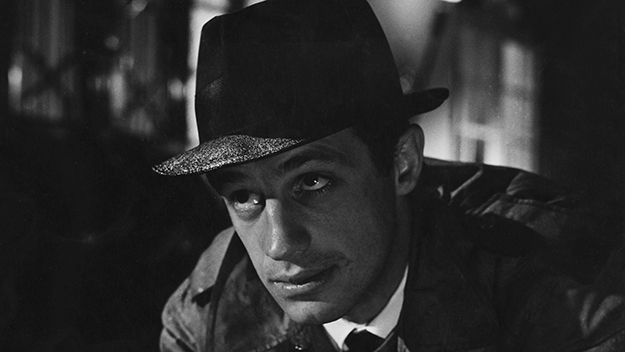
Jean-Paul Belmondo in Le Doulos (Jean-Pierre Melville, 1962)
In the dark, all cities look much the same, especially around the edges where they start to unravel. Picture a patch of waste land: gravel and weeds, litter scuffling in the wind, murky water glinting in the dim light, and some furtive figures in the shadows, up to no good. Where are we? What city is this? It could be Seoul or Buenos Aires, Mexico City or Prague, the grimy outskirts of Paris or the grimy outskirts of Tokyo. All these places were featured at Noir City 18, the latest edition of the Film Noir Foundation’s flagship festival held each January in San Francisco. This year’s lineup focused on international films from roughly the classic noir era (the earliest was from 1938, the latest from 1965). Every country inflects film noir with its own accent, its particular climate, and its patrimony of half-buried fears. Noir City’s 10-day tour of the globe’s most unsavory spots and unhappiest citizens revealed how the familiar formulas of Hollywood crime movies were sometimes echoed, sometimes reinterpreted, sometimes radically reinvented in other parts of the world, including World War II’s defeated Axis powers (Germany, Japan, Italy) and Latin and South America.
Stylistically, the 24 films from 11 countries mapped along a spectrum from cool to hot, from hardboiled austerity to melodramatic excess. The extreme ends of this spectrum were marked out by the two national cinemas that got the most exposure, those of France and Mexico, with four films each. French noir is the epitome of stylish sangfroid; in these movies, nothing matters more than the tilt of a man’s hat-brim, the angle of his raincoat-collar, and his ability to keep his cool in a universe of certain betrayal and sudden violence. The films are wholly dominated by men—but what men! Jean Gabin (Razzia, Any Number Can Win) commands the screen with his elemental simplicity and effortless authority; Jean-Paul Belmondo (Finger Man) with his radiant, boyish, slippery charm; Alain Delon (Any Number Can Win) with his enslaving beauty and lithe physical panache.
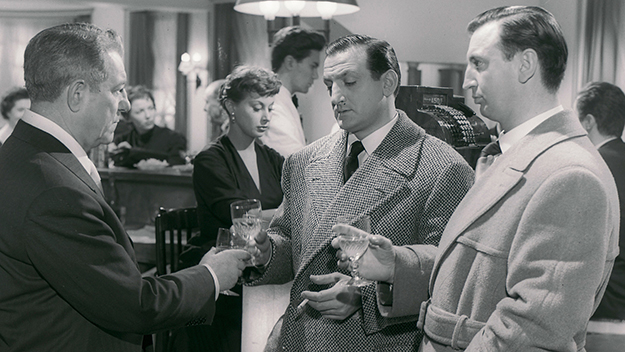
Razzia sur la Chnouf (Henri Decoin, 1957)
Style is everything in Masahiro Shinoda’s mesmerizing Pale Flower (1964), with its wee-hours mood of numb, spellbound recklessness; time seems to stop in long scenes devoted to the seductive ritualism of gambling and the nocturnal prowling of Ryô Ikebe’s gracefully world-weary hit man. In Michelangelo Antonioni’s first film, The Story of a Love Affair (1950), he was already sculpting a world chilly as ashes but marmoreally elegant, in which even lovers in the grip of adulterous passion move like sleepwalkers. Some films manage to combine cool with heat, like Pietro Germi’s delicious The Facts of Murder (1959), a police procedural that is spiced with humor but also laced with bitterness, as an investigation uncovers not just one criminal but a rotten foundation of sleazy betrayals, sexual opportunism, and secret desperation. Germi himself, armed with a pair of shades and a permanently dangling cigarette, plays the lead detective, just hinting at the compassion and moral judgment beneath his character’s unflappable hepcat demeanor. The film brilliantly captures the casual pandemonium of Italian life, the way crowds spontaneously combust with emotion and then go about their business.
In the South Korean films The Housemaid (1960) and Black Hair (1964), the overheated atmosphere is saturated with pain and perversity. In the former, a middle-class home becomes a sickly, claustrophobic hothouse in which hysterical women battle over a weakly passive man, and domestic disputes are settled with rat poison. In the latter, a gangster’s wife clings to her dignity while enduring a series of Job-like trials: first raped and blackmailed by a low-life drug addict, she is punished by being scarred and forced into prostitution, thanks to an absurdly cruel system upholding spurious male honor. Mexican films are also filled with flamboyant examples of toxic masculinity, like Pedro Armendaríz’s arrogant athlete in Roberto Gavaldón’s Night Falls (1952), a champion heel who explains that, “The weak deserve their fate. The weak don’t count,” and Rodolfo Acosta’s oily, abusive pachuco pimp in Emilio Fernández’s Salon Mexico (1949). But women in these films are no pushovers—they defend or avenge themselves with blunt force. Andrea Palma in Julio Bracho’s Another Dawn (1943) stands up to gun-toting men with Dietrich-like weary confidence, while Gloria Marín in Bracho’s Twilight (1945) revels in her power over the sexually obsessed Arturo de Cordova, casting an obliterating shadow over his reason.
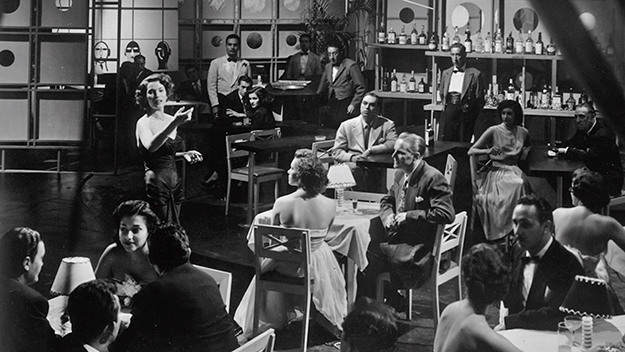
Night Falls (Roberto Gavaldón, 1952)
Mexican noir is powered by the explosive emotions of melodrama, by music and dance, and by overwhelming visual beauty. Cinematographer Alex Phillips gives every frame of Twilight a silky luster that fits the trance-like, lyrical tone of a troubled dream. Gabriel Figueroa’s cinematography for Another Dawn and Salon Mexico creates stark, glistening contrasts between dark and light, urban splendor and urban squalor. Veils of smoke and a sheen of sweat bathe the nightclub scenes, which pulse with Latin and Afro-Cuban rhythms, the music sinuously weaving in and out of the stories.
The fluidity of genre was much in evidence at Noir City, for instance in two Argentine films by Román Viñoly Barreto that have been newly restored by the Film Noir Foundation. The Beast Must Die (1952), based on a novel by Nicholas Blake (a pseudonym of Irish poet C. Day Lewis), is an incongruous but richly satisfying mash-up of an English murder mystery and an overwrought, Sirkian domestic soap opera. The opening section plays like a slightly crazed Agatha Christie country-house detective story, before flashbacks fill in the unbearably painful loss at the root of the cleverly self-referential plot in which a writer of murder tales methodically plans a real homicide. Like Night Falls, the story revolves around a man who is hated by so many people that suspense arises from which one of them will manage to do him in first. Despite the handsome trappings of upper-class life, the film exposes a warped society that accepts unchecked male power, and it ends with a twist of merciless irony. Viñoly Barreto, who co-wrote the script with star Narciso Ibáñez Menta, had started out as an art director, so it is not surprising that many of the movie’s pleasures comes from details of the setting, the foregrounding of objects, and even the costumes. A slow pan around a child’s room, or a close-up of a sugar cube dissolving into a cup of coffee, speak volumes with the simplest means.
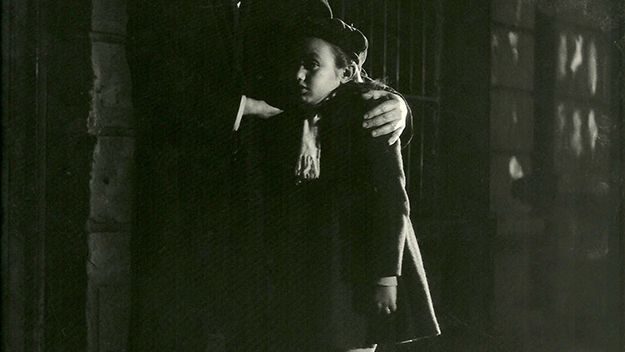
The Black Vampire (Viñoly Barreto, 1952)
Tinged with horror and melancholy, Viñoly Barreto’s The Black Vampire is not so much a re-make as a re-imagining of Fritz Lang’s M, and it stands proudly beside that earlier masterpiece, correcting one major flaw in the original—the way Lang wags his finger at neglectful mothers, while otherwise ignoring women entirely. Here, the tale of a pathetic, compulsive child-murderer (Nathán Pinzón) is interwoven with that of Rita (Olga Zubarry), a singer in a seedy nightclub who is unwillingly drawn into the police investigation after she catches a nightmarish glimpse of the man shoving a child’s body into the sewers. A working mother trying to support her daughter and hide the truth of her disreputable job, Rita is sympathetic but flawed, embittered by a world in which men—even an upright police detective—see her as a plaything. The killer himself is a shy misfit, tormented by the way women laugh at him, and Pinzón, usually a comic actor, uses his doughy, sad-clown face to instill a queasy mixture of pity and terror. The peace that settles over his face when he bloodies his fingers with a broken glass is chilling, but even more so is the way he clings to children because they alone don’t mock or judge him. In the end, he is captured not by underworld kingpins, but by fellow “untouchables,” outcasts who make a living scrounging in the sewers. Everyone in the film moves through a grungy, constricted world of tunnels, alleys, smoky nightclubs, cage elevators, and cramped apartments; everyone is trapped. The innocence of childhood is menaced not just by one sick man, but by pervasive sordidness and corruption.
In American film noir, criticism of society or political systems was usually implicit, smuggled out in the guise of straight, pulpy crime stories. Films from other countries were more likely to openly diagnose their national ills. At Noir City, the Murderer’s Row included maniacs and righteous avengers, hired assassins and petty thugs, accidental killers and suicides (this last being another element never seen in Hollywood films of the studio era). But nothing is scarier than when the murderer is the state, as in two of the festival’s outstanding titles, Robert Siodmak’s The Devil Strikes at Night (1957) and Zbyněk Brynych’s …and the Fifth Horseman Is Fear (1965). Siodmak was one of the many Jewish directors who fled the Third Reich for Hollywood, but one of the few who went back after the war. The Devil Strikes at Night is a masterfully controlled but pitiless anatomy of German society’s derangement under the Nazis. It opens with a scene that, with a slightly different tone, could have come from a Nazi propaganda reel, as an officer presents awards to robust young women farm workers at a harvest festival. Siodmak holds back from easy targets of mockery. He is saving his ammunition.
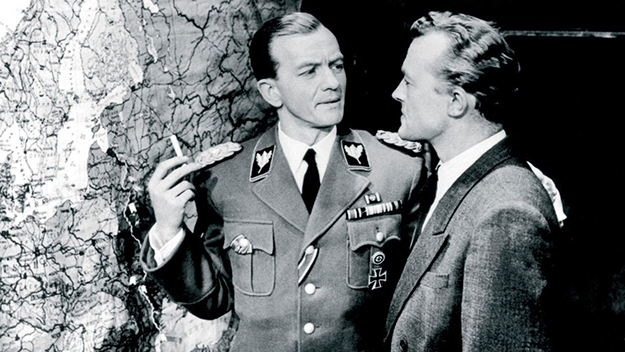
The Devil Strikes at Night (Robert Siodmak, 1957)
The film initially seems to be a straightforward cat-and-mouse tale of a police detective tracking a serial killer. Bruno Lüdke (Mario Adorf) is a brute who murders women with his bare hands, and who gleefully banks on the fact that he has been certified insane. Axel Kersten (Claus Holm) is an intelligent, cultivated man; assigned to the police after being invalided out of the army, he now wants only to lie low and survive the war. But he must confront the fact that under the Nazis, law and justice, facts and truth have ceased to exist. Initially the Party is delighted by the prospect of using Bruno as a poster boy for their new policy of eliminating the mentally unfit. But they change their mind when they realize that he has been at large for years and killed scores of women; rather than risk arousing distrust of authority, they quietly erase him, covering their tracks by letting an innocent man take the blame for the latest murder. Siodmak lets the story unfold with unblinking patience to its devastating climax; it feels terrifyingly relevant now.
…and the Fifth Horseman Is Fear is also set during the Second World War, presumably to get around censors, but makes almost no effort to conceal the fact that it is really about the oppressions of contemporary Czech life behind the Iron Curtain. In a sense it doesn’t matter: the depiction of a society ruled by fear, surveillance, and informers is universal. “Jews are outside the law,” Dr. Braun (Miroslav Machácek, riveting in his restrained intensity) repeatedly says. Crime movies are typically about people trying to survive outside the law, but what happens when the law itself is broken, when authority is criminal? Braun is a doctor unable to practice because of his religion, who has taken a job in a warehouse filled with goods confiscated from his fellow Jews. Cavernous spaces lined with clocks, violins, and pianos evoke a world of surreal absurdity and unspeakable loss. The former physician is drawn into treating and concealing an injured resistance fighter, and the incident exposes a cross-section of his tenement building: a watchful child, a bickering married couple, a frightened old woman, a weaselly informer in horn-rimmed glasses. A masterpiece of the Czech New Wave, the film is disjointed yet lucidly gripping, like a fever dream. Brynych uses static, asymmetrical compositions—a coat-hanger on a wall, a smoke-stack framed by a window—for transitions, recalling Ozu, but the mood is so tense it makes your skin crawl, and your nerves are wound tight by a spare, jangling score.
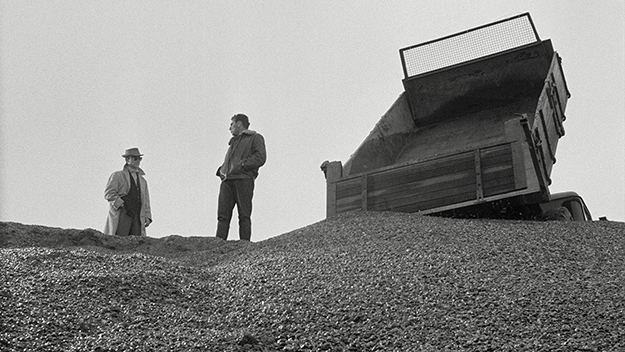
Black Gravel (Helmut Käutner, 1961)
What happens to societies after they have lived through such great traumas? An answer is found in Helmut Käutner’s Black Gravel (1961), a vivid and scathing portrait of postwar Germany, its soul-deadened cynicism thrown into high relief by the presence of an American air force base. Raffish locals scramble to grab whatever they can from the wealthy occupiers while plying them with booze and prostitutes. Others throw in their lot with the conquerors, marrying into the blandly sterile security of army housing estates. Helmut Wildt gives a charismatic, virile yet complex performance as Robert, a truck driver involved in black-market smuggling. A chance encounter reunites him with Inga (Ingmar Zeisberg), a former lover who is now the wife of an American officer. Robert seems callous and opportunistic, but harbors a poetic nostalgia for a lost world of rustic simplicity: village churches and nut cakes and swimming in mountain streams. His abraded romanticism emerges amid a series of shockingly ugly events, from revelations of casual racism and anti-Semitism to violent accidents and vicious fights. The gravel pit that serves to bury evidence of many wrongs (under what will become a launching strip for American fighter jets) bluntly illustrates the cheapness of memory and life itself.
An equally unsubtle yet potent image appears in Andrzej Wajda’s Ashes and Diamonds (1958): a crucifix hanging upside-down in a ruined church. The film opens on the afternoon of the final day of World War II in Europe, and extends over the night that follows. There is drunken revelry, but no real sense of triumph or relief. Young men like Maciek (Zbigniew Cybulski), a soldier in the Polish Home Army, have seen far too much death to return to normal life, and they are already engaged in a new fight against Soviet-backed Communists. Maciek first seems disturbingly light-hearted as he machine-guns a pair of victims (the wrong men, it turns out); the lanky, boyish Cybulski, sporting tinted shades and a tousled mop of hair, comes off like a hip, hopped-up teen gang member. But over the course of the night, as a casual fling with a blonde barmaid (Ewa Krzyzewska) turns serious, he reveals a vulnerable yearning for a different life, doubting the soldier’s code he has followed and the meaning of his comrades’ fight. He wants to change, but is change really possible? That is the question so many of these movies ask: do scars ever heal, can ruins be rebuilt, can wrongs be righted? The answer: maybe. But don’t count on it.
Imogen Sara Smith is the author of In Lonely Places: Film Noir Beyond the City and Buster Keaton: The Persistence of Comedy, and has written for The Criterion Collection and elsewhere. Phantom Light is her regular column for Film Comment.







